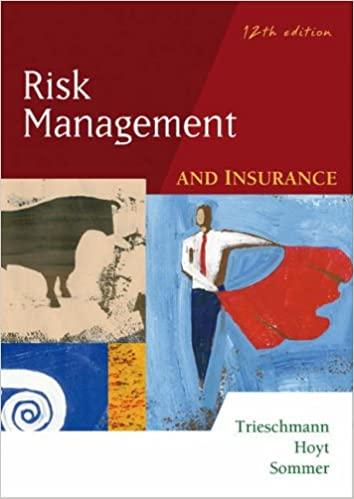Question
Guidance for the Enterprise Stock Evaluation Problem Set (use the company Broadcom INC.) As discussed in our class, each financial instrument can be viewed as
Guidance for the Enterprise Stock Evaluation Problem Set
(use the company Broadcom INC.)
As discussed in our class, each financial instrument can be viewed as a stream of future cash flows. In the context of public companies, their stocks can be seen as mechanisms producing these future cash flows. To fundamentally evaluate a public company's value, we essentially need to undertake two crucial steps: firstly, determine the future cash flows, and secondly, identify the appropriate discount rate. These procedures are simultaneously straightforward and complex. They're straightforward because the principles are similar to those we applied in evaluating an insurance project, as we explored in our exam. Yet, they are complex due to the challenge of accurately estimating each figure involved in the stock evaluation process. My aim is for you to understand the fundamental connection between the topics we discuss in class and their practical application.
To successfully complete this problem set, you should be familiar with the Discounted Cash Flow model, WACC, CAPM, Enterprise Stock Model, Dividend Growth Model, Financial Ratios, Bond Risk Levels, and Perpetuity.
A. Enterprise-based Stock Evaluation
1. Historical Free Cash Flow Data:
Locate the appropriate historical free cash flow data for your company.
Guide: You can find historical free cash flow data for any company with a simple Google search. For instance, if your assigned company is Apple, search for Apple historical free cash flow MacroTrends. The first link is usually the correct one.
- Future Cash Flow Prediction:
Use the historical data from step 1 and the accounting decomposition(EBIT, tax, depreciation, etc.) for free cash flow to project future cash flows.Determine the duration of your cash flow forecast (10 years, 20 years, or indefinitely) and identify the components of the FCF.
Your predictions must be logical and well-reasoned. You cannot arbitrarily choose numbers; you must provide sound reasoning to justify each number you predict. This part is challenging in real life and is also the basis for extra credit in this project.
Hint: You could predict that a company will grow at rate X1 for the next Y1 years, at rate X2 for the subsequent Y2 years, and then continue growing at rate X3 indefinitely. (This is a general example; feel free to develop your own growth framework.)
- Historical WACC Determination:
Identify the historical WACC and use it as your discount rate.
WACC = (equity/asset * cost of equity) + (debt/asset * cost of debt)
WACC consists of two components: cost of debt and cost of equity. Conduct research to find the necessary data. You must specify your sources and methods for obtaining these figures.
- Stock Evaluation:
Perform the enterprise-based stock evaluation by discounting the future cash flow using the WACC.
- Per Share Price Calculation:
Find out the current total number of shares outstanding for your company. Calculate its per-share price by dividing the value obtained in step 4 by the current total shares outstanding.
- Market Price Comparison:
Compare your estimated price with the actual market price. Provide your insights and analysis, even if the they dont match.
B. Dividend Growth Model
1. Historical Dividend Analysis:
Similar to the steps above, determine the historical dividend to project future dividends.
- Use Cost of Equity as Discount Rate: Apply the cost of equity as your discount rate.
- Use dividend growth model to calculate the stock price.
C. Financial Ratio Analysis
1. PE Ratio Assessment:
What is the PE ratio of your company?
- Similar Company Selection:
Identify a company similar to yours and provide justification for your choice.
- Financial Ratio Comparison:
Compare these two companies in terms of the five financial ratios categories we discussed in class.
Step by Step Solution
There are 3 Steps involved in it
Step: 1

Get Instant Access to Expert-Tailored Solutions
See step-by-step solutions with expert insights and AI powered tools for academic success
Step: 2

Step: 3

Ace Your Homework with AI
Get the answers you need in no time with our AI-driven, step-by-step assistance
Get Started


